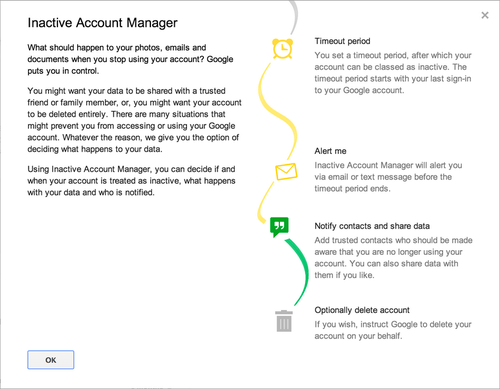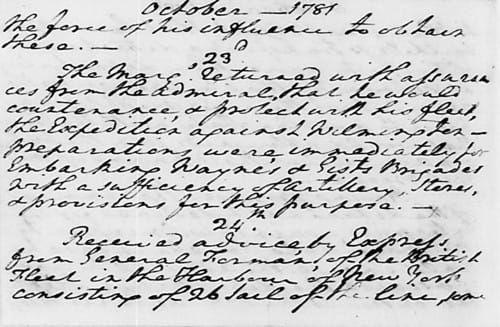In 2009, when Facebook introduced a “Reconnect” feature to prompt users to reach out to estranged friends, it spooked a number of users when Facebook suggested they reconnect with a dead friend or relative.
The use of the Internet in personal life is old enough that the question of what should happen to a deceased person’s online presence is relevant. Facebook offers an option to turn the profile of a deceased member into a memorial.
Last week, Google announced a service called “Inactive Account Manager” to help people plan their “digital afterlife.” Between videos uploaded on YouTube, emails and contacts on Gmail, profiles on Google+, and documents on Google Drive, Google holds an immense trove of personal and professional data for millions of people. The Inactive Account Manager allows people to decide what to do with all this data once they pass away – either by having it all deleted, or turning access over to a trusted list of contacts.
For most people, the data of a departed friend or relative will be a means to remember them or preserve important financial or professional information. But for famous figures from Barack Obama to Taylor Swift, their data will be desired by academics, gossipy college students, and many others.
The most personal of documents belonging to historical figures have been preserved, shared, and made fodder for historical analysis. George Washington’s diaries are available online. Publishing personal correspondence of literary figures posthumously is common in literary magazines. (Want to read James Joyce’s strange, dirty love letter? Click here!)
Perhaps the ease of deleting all your data in one click means that famous figures will delete their Google data. It’s easier than destroying every letter and diary entry. But our hunch is that most will not delete their all-important data, and just as has been the case for centuries, their friends and relatives will choose to make it publicly available.
If history is any guide, this means that history students will study the 50th President of the United States by reading through his archived Google data.
This post was written by Alex Mayyasi. Follow him on Twitter here or Google Plus.





